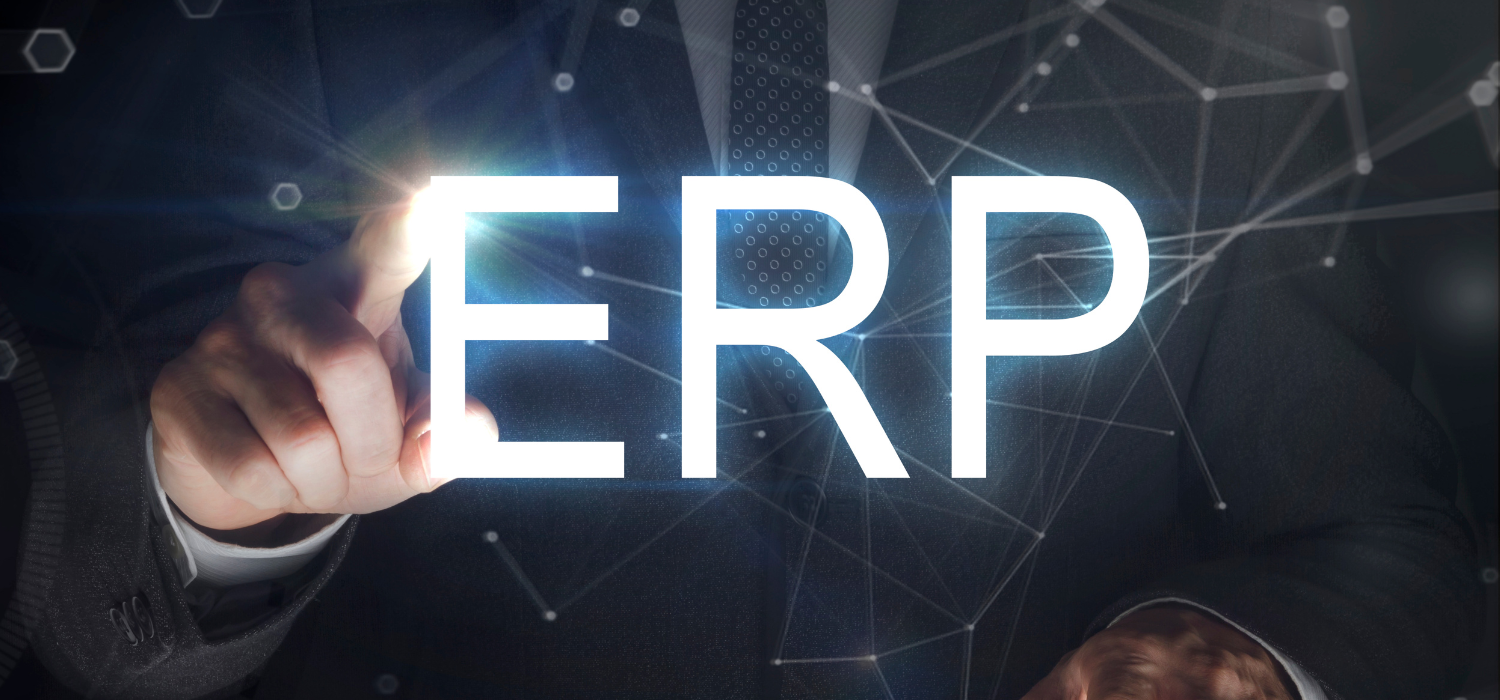Efficient management of business processes is a key element for eCommerce success. Automating day-to-day activities, optimising resources and coordinating the different company departments in real time is now an absolute necessity for digital stores of all sizes. In this context, an ERP (Enterprise Resource Planning) software becomes the strategic tool to tackle the complexity of business management.
In fact, an ERP software allows the integration of all critical functions of an eCommerce business within a single digital system, providing a complete and real-time view of business performance.
This guide is designed to help you understand what ERP software is, why it is essential for modern eCommerce, how to choose the solution best suited to your specific business needs and, finally, what are the main ERP solutions available on the market in 2025. Let’s get started!
What is ERP management software
An ERP (Enterprise Resource Planning) software is nothing more than a computer system designed to support, automate and integrate the management of core business processes. We are talking about accounting, warehouse management, sales, purchasing, production, human resources, customer relationship management (CRM) and much more.
Unlike simple management software, therefore, an ERP software does not act in watertight compartments, but connects all business areas in one centralised platform.
This interconnection between departments has several advantages: it allows for better internal collaboration, real-time sharing of information, and the ability to make faster and more informed decisions. The ERP thus becomes the beating heart of the organisation, capable of reducing operational time, eliminating data redundancy and improving the customer experience.
On-premise or cloud ERP software
Modern ERP software is available on-premise or in the cloud.
While on-premise systems require an in-house IT infrastructure and larger upfront investments, cloud solutions allow you to reduce implementation costs and enjoy greater flexibility, automatic updates and remote access.
Why ERP software is essential for eCommerce
In the eCommerce context, ERP software plays a central role in harmonising operations.
Online sales platforms have to manage a huge amount of data and processes on a daily basis: orders, shipments, returns, inventory, customers, accounting. Doing this manually or with non-integrated tools easily leads to errors, delays and inefficiencies.
An ERP software for eCommerce, on the other hand, allows you to
- Automatic data synchronisation: orders placed on the site are immediately recorded in the management system, updating stock availability, invoicing and logistics. This reduces management time and lowers the risk of errors.
- Centralised warehouse management: thanks to the integration of ERP and logistics systems, it is possible to check available stocks in real time, set minimum reorder thresholds, monitor inventories and manage several warehouses in a coordinated manner.
- Automate accounting: the recording of sales, the management of payments and receipts, the issuing of invoices and general bookkeeping are automated and always compliant with regulations through the use of ERP software.
- Improve customer care: by having a unified view of the customer (orders, communications, complaints, returns), the support team can offer a faster and more personalised service.
- Scaling your business: well-structured ERP software allows you to support business growth, integrating new physical or digital sales channels, new markets and higher volumes, without compromising operational efficiency.
In other words, an ERP software is not just a control tool, but a real performance accelerator for your eCommerce.
Guide to choosing ERP software for eCommerce
Criteria for choosing the right ERP software for your needs
The choice of ERP software cannot be random. It is in fact a strategic decision that must take into account numerous factors, including:
Scalability: the ERP system must be able to accompany your company on its growth path. When selecting and choosing your ERP, therefore, check that it is possible to add new modules, users or locations without having to change software.
Deployment model: One of the fundamental aspects in the choice of an ERP is the deployment model, i.e. how and where the software is installed and managed. The two main options, as we have anticipated, are:
- Cloud: cloud-based ERP solutions are hosted on remote servers and accessed via the Internet and offer significant advantages in terms of rapid deployment, automatic updates, scalability and access from any device. The cloud model requires a lower initial investment and is well suited to fast-growing businesses that need agile management without infrastructure costs.
- On-premise: in this case, the software is installed on local servers within the company. This approach provides greater control over data, deeper customisation and, in some cases, better performance. However, it entails higher initial costs, requires constant in-house maintenance and requires dedicated IT resources.
The choice between cloud and on-premise depends on several factors: first and foremost, the budget you have available, but also the level of customisation required, data security policies, and the technical capacity of the in-house team. In many cases, a cloud solution is the most efficient and sustainable choice, especially for eCommerce businesses undergoing growth or digital transformation, but make sure you make the right choice based on your needs.
eCommerce compatibility: a crucial aspect in choosing an ERP for online commerce is its ability to integrate with the platforms and sales channels used. The ERP must offer native integrations or flexible APIs that allow a stable and real-time connection with the main eCommerce platforms such as Shopify, Magento, WooCommerce, Prestashop, and with the most relevant marketplaces such as Amazon, eBay, Zalando, or Etsy.
Well-designed integration allows:
- Automatic synchronisation of product catalogues, avoiding duplication of data or the need for manual updates.
- The centralisation of orders, which are received directly from the ERP and sorted to the relevant departments (logistics, administration, customer care).
- Real-time updating of stock availability, avoiding overselling and improving customer satisfaction.
- Unified management of shipments and returns, regardless of the platform of origin of the order.
Modularity and flexibility: one of the main advantages of modern ERPs is their modular structure, i.e. the possibility of composing the system by choosing only those modules that are really necessary for your operational needs. This feature allows you to adopt a progressive approach, thus avoiding unnecessary costs and simplifying the initial implementation.
Moreover, the flexibility of a modular ERP also translates into the possibility of customising workflows, integrating external applications and adapting the interface to different business functions. This approach not only makes the system easier to use, but also ensures greater resilience to change: your eCommerce can evolve without having to replace the entire management system, but simply by adding or modifying existing modules.
User experience: the usability of an ERP is a factor that is often underestimated, but crucial for ensuring its operational effectiveness. An intuitive, modern and well-designed user interface makes it easier for your employees to learn the system, even for those without in-depth technical skills. When evaluating an ERP, also consider whether the platform offers a responsive, customisable interface with intuitive dashboard functionality to monitor relevant KPIs and metrics.
Support and service: even the best ERP can encounter technical obstacles or require maintenance. For this reason, the quality of the support offered by the supplier is a key element to consider. Check the average response time of technical support, availability in case of emergencies and the existence of certified local partners who can intervene quickly in case of complex problems or customisations. In addition, the presence of an active online community is often a great added value: it allows you to compare yourself with other users, find shared solutions and stay up-to-date on platform news.In the eCommerce environment, where even a brief interruption in service can cause significant damage, competent and timely technical support is a real guarantee of business continuity.
Total Cost of Ownership (TCO): when considering the purchase of an ERP, it is crucial to go beyond the mere purchase or licence price. The concept of Total Cost of Ownership (TCO) helps to consider the entire life cycle of the software, including all direct and indirect expenses associated with its use. In addition to the initial implementation cost, which may vary depending on whether a cloud or on-premise solution is chosen, it is therefore important to take into account:
- Customisation costs
- Maintenance costs: security updates, technical support, data backup and system monitoring are essential services that often incur recurring costs.
- Updates and upgrades: ERP platforms evolve over time. Newer versions may offer improved functionalities, but upgrades may entail new expenses, especially in on-premise systems.
- Staff training: the adoption of a new ERP requires that employees learn how to use it correctly. Training can be in-person or remote, but it remains a significant cost item, especially in the initial stages.
Carefully evaluating the TCO allows you to avoid surprises, compare seemingly similar solutions more realistically, and accurately plan the return on investment (ROI). An ERP with a low licence price may prove more expensive in the long run than a more expensive but comprehensive and stable solution.
The competitive advantage of ERP and logistics integration
On this point we must be very clear: an ERP alone is not enough. In fact, it is essential that it is integrated with logistics systems to ensure smooth supply chain management.
Integration between ERP and logistics makes it possible to:
- Automate order processing: when a customer purchases, the ERP system automatically informs the warehouse of the need to ship the product.
- Optimised returns management: in this way, the returns process can be managed in a transparent and tracked way, improving customer satisfaction.
- Tracking shipments: the ERP receives real-time data from couriers, updating the order status for customer service and the end customer.
- Analysing logistics performance: using dashboards and KPIs, it is possible to monitor delivery times, shipping costs, delays, and frequent problems, so that timely action can be taken to optimise the service.
In today’s landscape, the efficient management of proximity logistics has become a key competitive factor for an eCommerce business. Indeed, customers increasingly want more options for receiving their orders: in-store pick-up, Locker, Pick-up Points are alternatives to traditional home delivery that are increasingly demanded by consumers.
GEL Proximity is a strategic partner for any eCommerce company that wants to offer a flexible and widespread delivery experience. An ERP integrated with GEL Proximity enables automatic management:
- The choice of pick-up point
- Communication with the customer
- Package tracking
- The management of possible non-withdrawals and returns
How to choose the best ERP software for your eCommerce
Choosing the best ERP for your eCommerce depends on many variables: company size, growth objectives, budget, industry. However, what really makes the difference is the ability of the ERP to integrate seamlessly with sales, accounting and logistics processes.
In short, there is no single or valid answer for all eCommerce, but the choice of the perfect ERP software for your online store depends on your needs and objectives. Following all these tips, however, will help you in the process of choosing and selecting the right solution for you.












